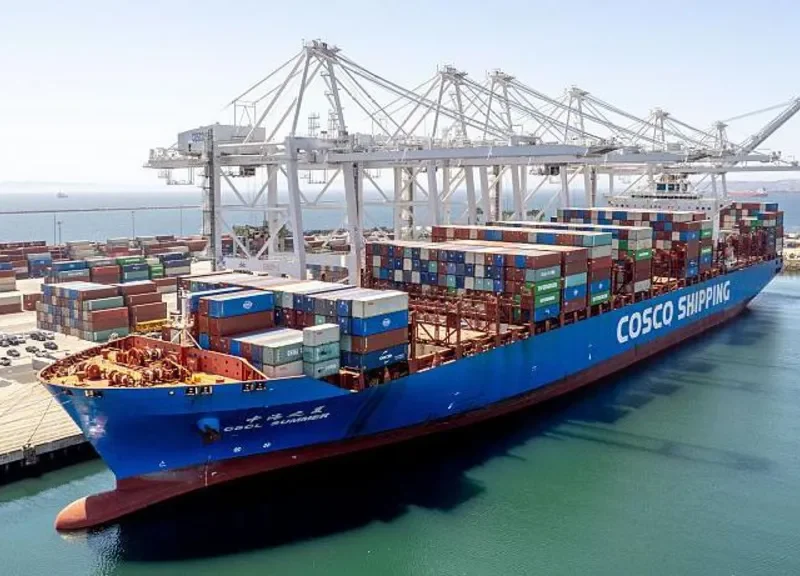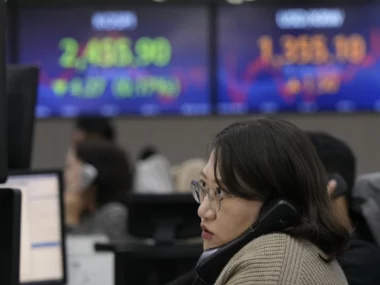The Trump administration has revealed its plan to implement port fees on Chinese ships in an effort to boost US shipbuilding and challenge China’s dominance in the industry.
The US Trade Representative (USTR) outlined that the new fees would be less severe than a previously proposed plan from February, which suggested charging Chinese vessels up to $1.5 million (£1.1 million) for each visit to an American port.
The fees are set to be introduced in 180 days and will increase over the following years.
There are concerns that these measures could further disrupt global trade amidst President Donald Trump’s tariff policies. The USTR stated that China has largely achieved its dominance in the sector, putting US companies, workers, and the economy at a disadvantage.
The fees for Chinese vessels will be based on the weight of their cargo, the number of containers they carry, or the number of vehicles onboard. For bulk carriers, the fee will depend on cargo weight, while for container ships, it will be determined by the number of containers.
Initially, Chinese ship owners and operators will be charged $50 per ton of cargo, with an annual increase of $30 per ton for the next three years. For Chinese-built ships, the fee will begin at $18 per ton or $120 per container, also rising annually over the next three years.
Non-US-built ships transporting vehicles will incur a fee of $150 per vehicle.
These fees will be applied once per voyage, up to five times per year. The USTR also decided not to impose fees based on the number of Chinese-built ships in a fleet or future Chinese ship orders, as originally proposed.
Empty vessels carrying bulk exports like coal or grain will be exempt from the charges.
In three years, a second phase will begin, prioritizing US-built ships for liquefied natural gas (LNG) transport. These restrictions will increase over the following 22 years.
Experts have noted that global trade is already being affected by Trump’s trade tariffs. Cargoes originally headed for US ports are being rerouted to European ports, causing disruptions.
Businesses have warned that this will result in higher prices for US consumers. Since taking office in January, Trump has imposed tariffs of up to 145% on Chinese imports, while other countries face a 10% blanket tariff until July. When the new tariffs are added, some Chinese goods could be subject to up to 245% in levies.
The tariffs have led to significant ship congestion, particularly in the EU, and to a lesser extent in the UK. Marco Forgione, director of the Chartered Institute of Export & International Trade, highlighted that more ships are now arriving in the UK, and Chinese imports into the UK and the EU have risen by 15% and 12%, respectively, in the first quarter of 2025.
Sanne Manders, president of logistics firm Flexport, pointed out that both tariffs and port strikes in Europe have led to congestion, especially in the UK and major ports like Rotterdam and Barcelona.
He warned that if more cargo is redirected to Europe, it could lead to further congestion, although increased terminal operating hours in summer may help. He also noted that while US consumers will bear the cost of the tariffs, European consumers will not face much impact, though companies might adjust their supply chains accordingly.











